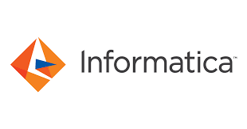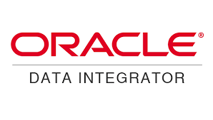With so much data coming from an increasing number of data sources, data integration - the process of combining and harmonizing data from multiple sources, formats, or systems into a unified single source of truth - plays a critical role in enabling businesses to gain valuable insights and make informed decisions.
Since doing this manually is both enormously time-consuming and prone to mistakes, figuring out how to efficiently integrate data has become a crucial challenge for most businesses, and, as such, many are increasingly turning to data integration tools to automate the process.
However, with the wide array of data integration and transformation tools available, it can be overwhelming to determine where to start and which tool best suits your business needs.
Not to worry! In this article, we'll run through everything you need to know about data integration tools, the top things you need to know when deciding on the right tool for your business, plus the best 17 data integration tools on the market in 2025.
Quick Summary: Top Data Integration Tools in 2025
Here’s a quick overview of the best data integration tools in 2025, helping teams unify and automate data across platforms:
- Adverity – Marketing-focused platform with deep analytics connectors
- Fivetran – Automated ETL pipelines with strong cloud support
- Talend – Open-source and enterprise-grade data integration suite
- MuleSoft – API-first integration platform for large enterprises
- Informatica PowerCenter – ETL powerhouse for complex data workflows
- SnapLogic – Visual iPaaS with AI-assisted pipeline building
- AWS AppSync – Real-time GraphQL integration from Amazon Web Services
Each tool offers a unique approach to data integration, depending on your team size, use case, and infrastructure.
What are data integration tools?
Data integration tools are software solutions that simplify the process of, unsurprisingly, integrating data - that is, combining data from various sources into a single unified format. Importantly, they automate the tedious tasks of extracting, transforming, and loading data, saving you time and effort.
Generally speaking, tools for data integration provide connectors to connect to APIs from different data sources like databases, applications, digital marketing platforms, and files. This is often alongside additional features such as data mapping, transformation, and workflow management to improve both the quality of your data and the efficiency of your data operations.

Benefits of using data integration platforms
Typically, data integration platforms and tools enable organizations to streamline data integration workflows, automate repetitive tasks, and ensure data quality and accuracy. This is significant because, by automating the data integration process, businesses can save huge amounts of time and resources when it comes to their data operations.
At the same time, automated data integration also reduces the likelihood of human error resulting from manually integrating data. In fact, when it comes to data quality, many data integration tools provide a number of functions specifically designed to improve the quality and consistency of your data including data cleansing, data transformations, and validation, not to mention data governance and compliance through features like metadata management and security controls.
Overall, data integration software and tools streamline processes, improve data quality, enable scalability, and support real-time integration. By leveraging the right integration tool or platform, you can help harness the full potential of your business's data and in doing so gain valuable insights that let you make more informed business decisions.
Data integration tools Vs. Data ingestion
If you've heard of data ingestion before, it’s worth pointing out that there is a key difference between data integration and data ingestion. While the two are related, they have distinct processes in the context of data management.
Data ingestion refers to the process of collecting and importing data from various sources into a storage or processing system. It involves acquiring raw data and bringing it into a centralized location or repository, often referred to as a data lake or data warehouse. Data integration, on the other hand, involves combining and harmonizing data from multiple sources to create a unified and consistent view of the data. It focuses on transforming, cleansing, and merging data from different sources to ensure compatibility, coherence, and usability.

Types of data integration tools
Data integration tools can be categorized into several types based on their functionality and approach to data integration. And, in some cases, a single tool might cover more than one of the common types of data integration tools listed below:
Extract, Transform, Load (ETL) Tools
ETL tools are designed to extract data from various sources, transform it into a consistent format, and then load it into a target system. These tools typically involve data extraction from source systems, data cleansing, data transformation, and loading into a data warehouse or another destination.
Data Preparation Tools
These tools focus on data profiling, cleansing, and enrichment to ensure data quality and readiness for integration. They typically provide features for data exploration, data validation, data transformation, and data enrichment to improve the quality and usability of the integrated data.
Data Migration Tools
Data migration tools are used to transfer data from one system or environment to another. They focus on ensuring data integrity, mapping data between different structures, and migrating data while minimizing downtime and disruption.
Data Integration Platforms
Data integration platforms tend to be comprehensive solutions that offer a wide range of data integration tools under one roof. As such, they typically combine all the functionality of ETL, data preparation, and data migration tools in a single place, making it easier for users to manage and use their data in a single system. In some cases, they may also provide data visualization or even data analytics features too.
Key factors when choosing a data integration tool
When selecting a data integration tool, it's important to consider several key factors to ensure it meets your organization's specific requirements and aligns with your data integration goals.
Connectivity
For any data integration tool, it is absolutely crucial that it is able to connect to the data sources that you need to connect to. Always check whether a data integration tool offers pre-built connectors to your desired platforms and, if built via APIs, whether these API connectors are regularly maintained. Failing that, ensure that there are simple and/or flexible options for adding or building your own connectors.
Capability and performance
Not only do you need to assess a tool's ability to integrate with various relevant data sources you use, but you also need to make sure it has the capability you require. This means ensuring that it can fetch data at the right level of granularity you need and at the right frequency. In general, consider the key data integration scenarios you require. If it cannot meet those, then this is not the solution for you.
Data quality and governance
Evaluate a tool's capabilities for data profiling, data cleansing, and data quality management. A good data integration tool should be able to support data governance practices including data lineage, metadata management, and data security controls.
Composability
When buying any new tool or software, it is always important to ensure that it integrates with your existing toolset. A particular solution may sound great in principle, but if it requires completely rebuilding your entire tech stack, it may not be worth it compared to other solutions that can integrate seamlessly with the tools you already have.
Scalability and future-proofing
Consider an integration tool's ability to scale as your business grows. A tool might seem great for your immediate needs but, if your needs are likely to scale in the future, you may find yourself outgrowing its capabilities very quickly leading to a lot of time and resources setting up a solution that won’t last that long. In doing so, it is also worth taking a look at a tool's roadmap and future development plans to see what is on the horizon and how that might fit your own future needs.
Implementation and support
Consider the time and effort required to implement the tool - and, in doing so, find out what level of support is provided. A tool might sound great on paper but, if it requires a high level of technical expertise to implement or use, or there is little to no support provided, you may find you are never able to get the most out of it and it ends up unused.
Cost (and hidden costs)
Obviously, cost is going to play an important role in what data integration tool you choose. Make sure you understand the pricing model of the tool, whether it's a one-time purchase, subscription-based, or usage-based. Also, consider the total cost of ownership, including any additional costs for support or add-ons/additional features you require as this can quite drastically ramp up the final cost.
Vendor support and reputation
Lastly, always assess the reputation and track record of the tool's vendor. Use trusted sites such as g2.com, Capterra, and Gartner to see what existing users feel about the data integration tool you're considering.
17 data integration tools to look out for in 2025
With the above in mind, we’ve gathered together a list of the best data integration tools and platforms to look out for this year.
1. Adverity
Adverity is a data integration platform that focuses on marketing and analytics teams. Users get access to one of the world’s largest libraries of data connectors covering a wide array of data sources. As a fully-integrated data platform, Adverity provides a comprehensive set of data integration features and functionalities from transformation, data governance, visualization, and analytics capabilities.
-
Who is it for?
Marketing and analytics teams and/or agencies seeking to build a holistic view of their marketing and business performance.
-
G2 Score: 4.5 stars
-
Website: www.adverity.com
2. AWS AppSync
AWS AppSync is a managed service by Amazon Web Services (AWS) that simplifies the development of real-time applications by providing GraphQL APIs to access and integrate data from multiple sources. AWS AppSync can be used in various use cases, including real-time collaboration tools, chat applications, gaming applications, IoT (Internet of Things) applications, and any other scenario where real-time data delivery and synchronization are critical.
-
Who is it for?
Developers building real-time applications that require efficient data integration and synchronization.
-
G2 Score: 4.3 stars
-
Website: www.aws.amazon.com
3. Celigo
Celigo is a cloud-based integration platform that provides pre-built connectors and integration templates to connect and automate data flows between different business applications. It offers a comprehensive suite of app integration solutions to help organizations streamline their workflows, synchronize data, and automate business processes.
-
Who is it for?
Small to medium-sized businesses that need to synchronize data between different business applications.
-
G2 Score: 4.6 stars
-
Website: www.celigo.com
4. Dell Boomi
Like Celigo, Dell Boomi is a cloud-based integration platform that facilitates the connection and integration of applications, data, and processes across various systems and platforms. It offers a comprehensive suite of tools and services to enable organizations to build, deploy, and manage integrations quickly and efficiently.
-
Who is it for?
Businesses that require seamless integration between different applications and systems, particularly those with complex IT environments that rely on a mix of cloud-based and on-premises applications.
-
G2 Score: 4.3 stars
-
Website: www.boomi.com

5. Fivetran
Fivetran is a cloud-based ETL platform that focuses on automating data pipeline setup and management. It provides pre-built connectors to various data sources and loads the data into a central table or spreadsheet.
-
Who is it for?
Teams that want a simple way to extract data from basic data sources and put them into a table.
-
G2 Score: 4.2 stars
-
Website: www.fivetran.com

6. IBM
IBM offers multiple data integration tools, including IBM App Connect (cloud-based integration platform) and InfoSphere DataStage (on-premises ETL tool). Both tools provide capabilities for connecting applications, systems, and data sources.
-
Who is it for?
Large enterprises with varied integration needs, including cloud-based or on-premises data integration requirements.
-
G2 Score: 4.4 stars
-
Website: www.ibm.com

7. Informatica PowerCenter
Informatica PowerCenter provides a comprehensive set of tools and functionalities for extracting, transforming, and loading (ETL) data from various sources into a target system like a data warehouse for example. PowerCenter is known for its scalability, robustness, and ability to handle complex data integration requirements.
-
Who is it for?
Informatica PowerCenter is a cross-vertical solution with an emphasis on supporting organizations that handle user data such as healthcare, financial services, and governments.
-
G2 Score: 4.4 stars
-
Website: www.informatica.com
8. Jitterbit
Jitterbit is a data and application integration platform that enables organizations to connect and integrate data, applications, and systems across their IT landscape. It provides a range of tools and features for data integration, application integration, and API management. Jitterbit supports both cloud-based and on-premises environments, making it suitable for hybrid IT infrastructures.
-
Who is it for?
Jitterbit is designed for businesses that require seamless connectivity and data synchronization between diverse applications, databases, and systems.
-
G2 Score: 4.6 stars
-
Website: www.jitterbit.com

9. Microsoft Azure Data Factory
Microsoft Azure Data Factory (ADF) is a collection of cloud-based services and tools provided by Microsoft for managing, processing, and analyzing data.
-
Who is it for?
ADF is primarily designed for organizations that need to orchestrate and automate data workflows across various sources and destinations.
-
G2 Score: 4.5 stars
-
Website: www.azure.microsoft.com
10. MuleSoft Anypoint Platform
Anypoint Platform by MuleSoft is another example of a data integration platform that focuses on applications enabling organizations to connect applications, data, and devices across their IT infrastructure. It provides a comprehensive set of tools and services for designing, building, managing, and monitoring APIs, integrations, and data flows.
-
Who is it for?
Organizations with complex IT landscapes, including on-premises systems, cloud applications, and hybrid environments.
-
G2 Score: 4.4 stars
-
Website: www.mulesoft.com
11. Oracle Data Integrator
Oracle Data Integrator (ODI) is an ETL tool and data integration platform specifically designed for Oracle databases and applications. It provides features for data transformation, data loading, and data quality.
-
Who is it for?
Oracle Data Integrator is designed for medium to large enterprises across industries that require a powerful and scalable data integration solution.
-
G2 Score: 4.0 stars
-
Website: www.oracle.com
12. Pentaho
Pentaho Data Integration is a great open-source ETL and data integration tool that offers visual data integration, transformation, and loading capabilities. As an open-source solution, Pentaho caters to businesses that are prepared to undertake a lot of technical expertise themselves and do not require much support, although there is a commercial edition available too.
-
Who is it for?
Businesses seeking an open-source data integration solution.
-
G2 Score: 4.3 stars
-
Website: www.hitachivantara.com
13. SAP Data Services
SAP Data Services is an enterprise-level data integration and ETL tool that enables the extraction, transformation, and loading of data from various sources into SAP applications and other target systems.
-
Who is it for?
Organizations using SAP applications and requiring robust data integration capabilities.
-
G2 Score: 4.7 stars
-
Website: www.sap.com
14. SnapLogic
SnapLogic is an Integration Platform as a Service (iPaaS) that provides a visual interface for designing and managing data integration workflows. It offers a wide range of connectors and pre-built intelligent data transformation components.
-
Who is it for?
Enterprises requiring a user-friendly, cloud-based data integration platform.
-
G2 Score: 4.0 stars
-
Website: www.snaplogic.com
15. Talend
Talend is an open-source data integration and ETL tool that offers a comprehensive suite of data integration and management capabilities. It provides a visual interface for designing integration workflows and supports various data sources and target systems.
-
Who is it for?
Enterprises requiring a user-friendly, cloud-based data integration platform.
-
G2 Score: 4.0 stars
-
Website: www.talend.com
16. Tray.io
Tray.io is an iPaaS that focuses on workflow automation and data integration. It offers a visual interface for building integrations and automating business processes across various applications and systems.
-
Who is it for?
Organizations requiring workflow automation and data integration for their business processes.
-
G2 Score: 4.6 stars
-
Website: www.tray.io
17. Zigiwave
Zigiwave is a data integration and middleware platform that enables seamless integration between enterprise applications, databases, and systems. It offers pre-built connectors and tools for various applications and systems.
-
Who is it for?
Enterprises seeking integration solutions for specific applications or systems.
-
G2 Score: 4.8 stars
-
Website: www.zigiwave.com
Conclusion
Easy access to accurate properly integrated data is a must-have for any modern business which is why investing in the right data integration tool is crucial. However, the concept of data integration covers a range of different processes. Different data integration tools can focus on different parts of that process and be weighted toward solving specific challenges facing specific teams or companies. As such, decision-makers need to carefully weigh up the needs of their teams as well as the wider business to find the best solution for them.





















